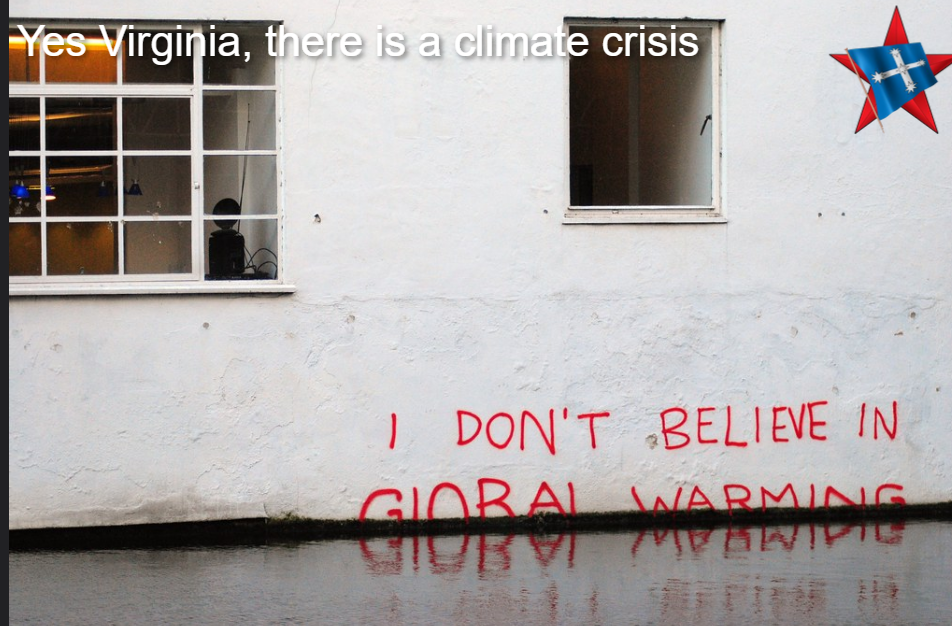
VANGUARD - Expressing the viewpoint of the Communist Party of Australia (Marxist-Leninist)
For National Independence and Socialism • www.cpaml.org
For decades, we have been warning about the consequences of careless greenhouse gas emissions on the Earth’s environment. Now the pace at which the global climate is changing is speeding up.
On November 17, the global average temperature hit 2.07 degrees Celsius above the pre-industrial average (specifically above the average global temperature across the 1850-1900 period, before artificial greenhouse gas emissions began to have a noticeable effect). This is the first time the “two-degree threshold” has been crossed since prehistoric times. While the exact threshold was just crossed temporarily, it seems likely that this will become the new “normal” in a matter of years.
The impact of artificial warming is already being felt across Australia. Earlier this month much of the country experienced severe heatwaves. For example, on December 9 the outside temperature in some parts of Sydney got as high as 46 degrees Celsius. If the big fossil fuel corporations have things their way, that’s going to become a regular occurrence. And not just in Australia – this year heat waves have hit every continent, with hundreds of confirmed deaths so far.
It is not just temperature that has hit dangerous new records this year. Back in July, the Antarctic sea ice “deficit” (that is, the difference between how much of the Southern Ocean was covered by sea ice and how much is normally covered by sea ice at that time of the year) grew to 2.5 million square kilometres. In other words, an area equal to that of the state of Western Australia that should’ve been ice-covered wasn’t.
What will the world look like if this becomes an everyday occurrence, if the two-degree mark is crossed as a year-round average rather than as a temporary event? Over the past ten years several research studies and reports have attempted to answer this question. Their conclusions? In a two-degree “new normal”, severe heatwaves will last much longer and expose much more of the global population on a regular basis. Heavy rainfall will be more intense and across much of the world’s land, the risk of river flooding will increase substantially. Either most or all coral reefs will be at risk of annual bleaching. Crop yields such as those of wheat and maize will plummet, which may cause the largest mass famines in history. Global sea levels will rise significantly, washing countless islands and coastal communities off the map. Extreme weather, famine, and sea level rise could result in a refugee crisis on an unprecedented scale, conflicts over food and clean water, and the extinction of a significant fraction of the world’s plant and animal species. And this is not even a worst-case scenario.
Earlier this month, the United Nation’s COP28 Climate Conference was held in Dubai. Despite how much this year has demonstrated the severity of the crisis, the draft agreement published on December 11 was described as a “death certificate” for the most vulnerable countries. Later “compromise” agreements essentially amounted to “we promise we will achieve net zero emissions by the time we’ve used up almost all the fossil fuels on the planet”. That's not very helpful.
It is obvious who’s interests are being represented here and who’s aren’t. As Irish communist leader James Connoly excellently summarized back in 1915, governments in capitalist society are but committees of the rich to manage the affairs of the capitalist class. This is just as true in the present day. The bourgeoisie are not the ones at risk of starvation, dehydration, hyperthermia, or drowning. And they already view those who are at risk as expendable. In particular, the decision to continue a business-as-usual approach is most beneficial for multinational fossil fuel corporations and the politicians affiliated with them. It is no secret that these corporations have a significant amount of leverage in Australia, and as a result are, for example, permitted to mine and drill on Indigenous peoples’ lands without their consent.
The military-industrial complex also benefits from this policy approach. When we think of the devastation caused by the war industry, it is natural to immediately remember the mass suffering this causes directly, in countries such as Ukraine and Palestine. But what is often overlooked is the contribution warfare makes to greenhouse gas emissions. Here in Australia, the ADF is responsible for 66% of the Australian government’s emissions. Elsewhere the portion is similar – the UK armed forces account for 50% of the British government’s emissions, and the US military accounts for 56% of American government emissions.
There is hope. As the effects of the climate crisis continue to grab headlines and catch the world’s attention, more people will take the crisis seriously, and this may lead more people to question the mode of production that’s driving us into this catastrophe. In the short-term, we’re likely to see more activism placing pressure on the bourgeoisie to take some measures to at least slow down the crisis. In the long run, increasing awareness of the climate crisis and it’s driving causes could lead to an increase in class consciousness, which may become an important step toward the establishment of socialism in Australia and elsewhere, leading to more serious measures being taken. The technology to solve the climate crisis already exists, all we need are leaders willing to solve it, to prioritise the interests of the Earth over the interests of capital.
As we all enter the new year, we should keep in mind that despite the severity of the crisis, a better world is still possible.